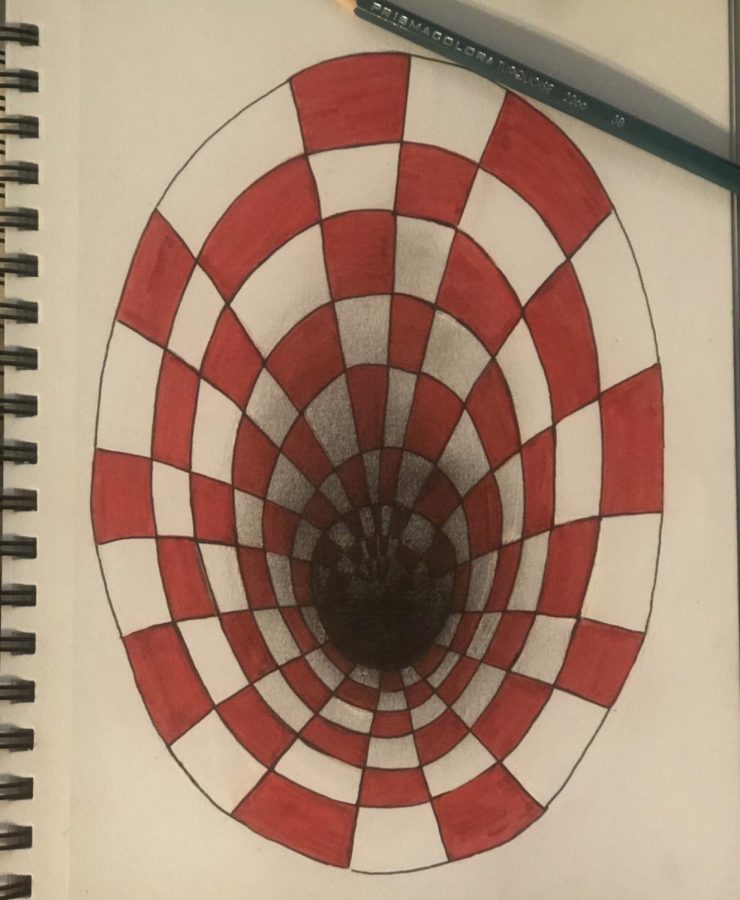How Art Electives are Handling Distance Learning
Art electives don’t let distance learning get in the way of their curriculum.
September 16, 2020
With the onset of distance learning, many Centurion students and staff involved in art electives on campus have had to adjust their hands-on classes to an online format. Some are finding it challenging to learn their subject online as teachers attempt to transition their artistic and visual classes for students.
Ninth grade Saugus art student, Yeilany Sosa, said, “I think the real difference is that we aren’t in a physical class environment. It’s a small difference, but I feel that what makes an art class more enjoyable is sharing your work with others.” Online learning can limit and restrict students from interacting with one another in art electives and also limit the materials art students can work with, which can be difficult for students to get used to.
Teaching online for Saugus’s art teacher, Erika Jacobs, has been something to adjust to but she and her students are making the most of it, “I used Google classroom before remote learning, so online has always been an extension of in person learning. Teaching art in the classroom or online is still teaching art and students are learning, no matter the setting.” Using platforms such as Google Classroom, can positively impact the routine of distance learning. “Students in my class have demonstrated an understanding of art both in person and online. Starting the school year online has been fun. We are finding ways to make connections with one another through sharing our artwork and creating class music playlists. My students are turning in high quality work that is a reflection of their understanding of art,” according to Jacobs.
These students have been using their imagination the best that they can to create the amazing artwork they would create in the classroom. They also have to get used to not being able to be in a classroom, which can be more challenging for visual learners, like Sabina Spurgin, a 9th grader at Saugus taking art. She says, “I feel like I’m more of a visual learner and it’s kind of difficult online and not be present in the classroom and I want to know my peers and teacher better.”
According to inc.com, around 65 percent of the population are visual learners, which means these learners learn more easily when someone demonstrates how something is done. Online learning can get in the way of allowing visual learners to learn art face to face. Students can watch videos to show them how something is done and what the art should look like. Not being in a classroom is an obstacle for students and teachers in art electives will have to overcome.
Certain art topics like visual arts are easier to engage with than pottery and ceramics. Pottery and ceramics can be harder to learn online, since students might not have the materials. Teachers may have to come up with a different way of teaching ceramics or provide the materials for the students.
Most students have access to paper and coloring materials, but not everyone has ceramic materials for pottery and sculpture projects, which can interfere with students’ learning. Mr. Stuart, a ceramics teacher at Saugu said, “I scheduled a clay pick up for students to come on campus and pick up 5 pounds of clay. We plan on making our own tools out of household items and that will actually be a project in itself. I’ll check with each student individually to see what kind of tools they have at home and how they can use alternatives for specific tools. It’s actually quite fascinating what you can come up with and discover ways to make this all work.”
In Mr. Stuart’s class he and his students are also starting to adjust to the environmental change of online learning in a positive way. “The ceramics students are getting the same amount of knowledge and skill in my classroom, but just not in the most traditional setting. In my opinion, I think we’ve all adjusted to this situation with great perseverance,” Stuart said.
It can be difficult for students to try and learn and understand how to draw and create certain things like pottery and art, when it is not face to face learning. Some students even had to find ways to create art with materials other than markers and crayons. Sosa commented, “I don’t think the actual process of doing the art is harder because it’s online. The teacher is only making us draw in pencil, since most of the students don’t have art supplies at home. The teacher is also accommodating lessons for the students that can be done at home.” It can be difficult, but students are adjusting to the new challenges.

